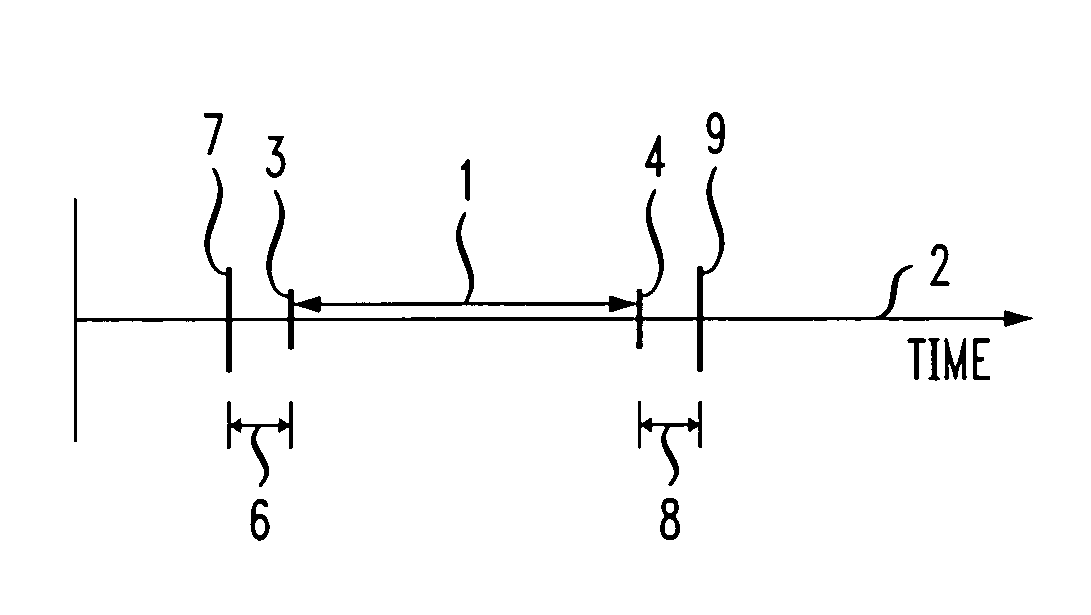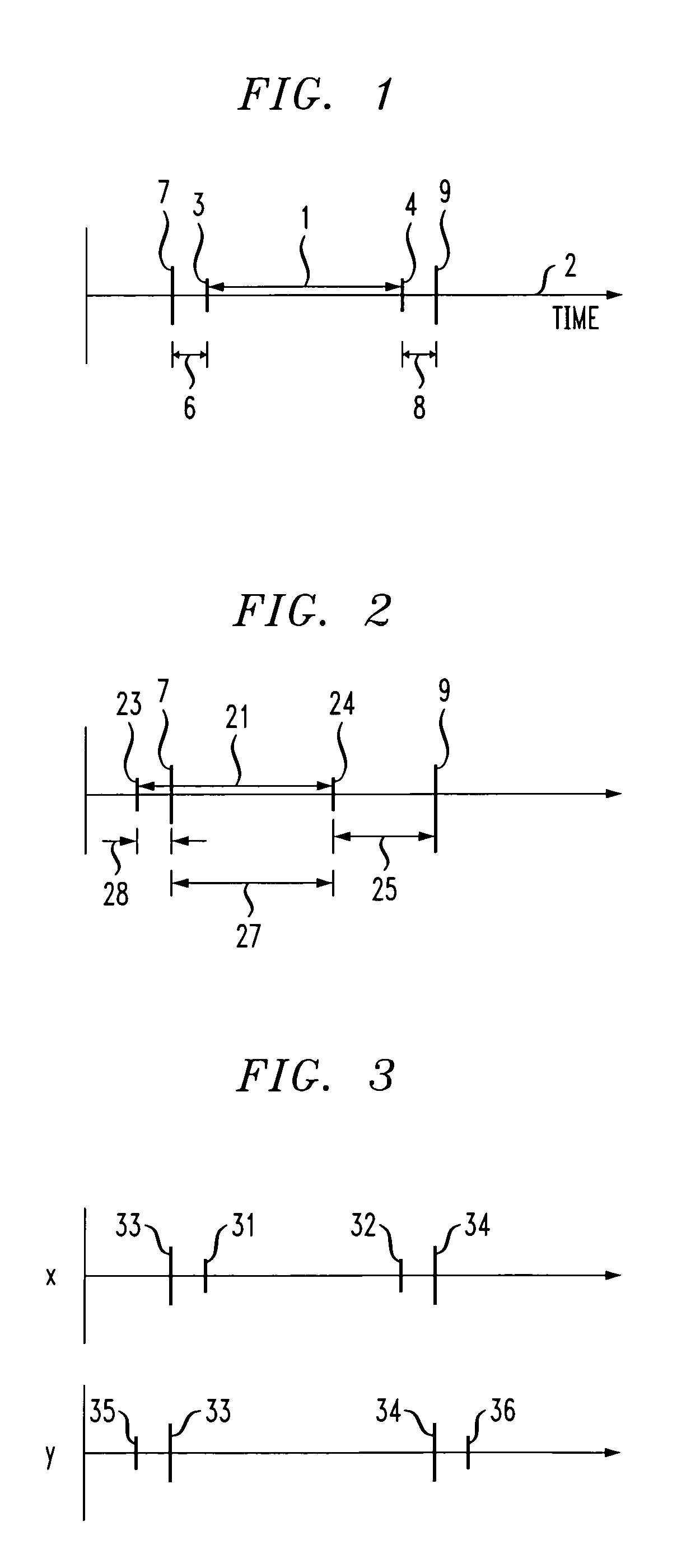Identification of base stations
a technology of identification and base station, applied in the field of wireless communication systems, can solve problems such as creating interference to the carrier, and achieve the effect of facilitating hard hando
- Summary
- Abstract
- Description
- Claims
- Application Information
AI Technical Summary
Benefits of technology
Problems solved by technology
Method used
Image
Examples
Embodiment Construction
[0016]The identification of base stations in compact cells is accomplished using phase shifts relative to at least one benchmark, preferably at least two benchmarks, of a beacon signal. (The terms phase shift and phase are used interchangeably in the remainder of this disclosure.) For purposes of this invention, a benchmark is a point in time that is specifically identifiable from a repeated transmission pattern. Thus in the example of a CDMA system, exemplary benchmarks are the times at which each PN offset begins. For a UTMS system, exemplary benchmarks are also the beginnings of each data frame. The phase associated with each benchmark is the point in time relative to each benchmark that the pattern of the beacon signal actually begins. To illustrate, in a CDMA system the beginning of a two second time interval is marked by a global positioning satellite (GPS) signal. As previously discussed, such two second interval is divided into seventy-five 26-⅔ millisecond divisions. Each d...
PUM
 Login to View More
Login to View More Abstract
Description
Claims
Application Information
 Login to View More
Login to View More - R&D
- Intellectual Property
- Life Sciences
- Materials
- Tech Scout
- Unparalleled Data Quality
- Higher Quality Content
- 60% Fewer Hallucinations
Browse by: Latest US Patents, China's latest patents, Technical Efficacy Thesaurus, Application Domain, Technology Topic, Popular Technical Reports.
© 2025 PatSnap. All rights reserved.Legal|Privacy policy|Modern Slavery Act Transparency Statement|Sitemap|About US| Contact US: help@patsnap.com


